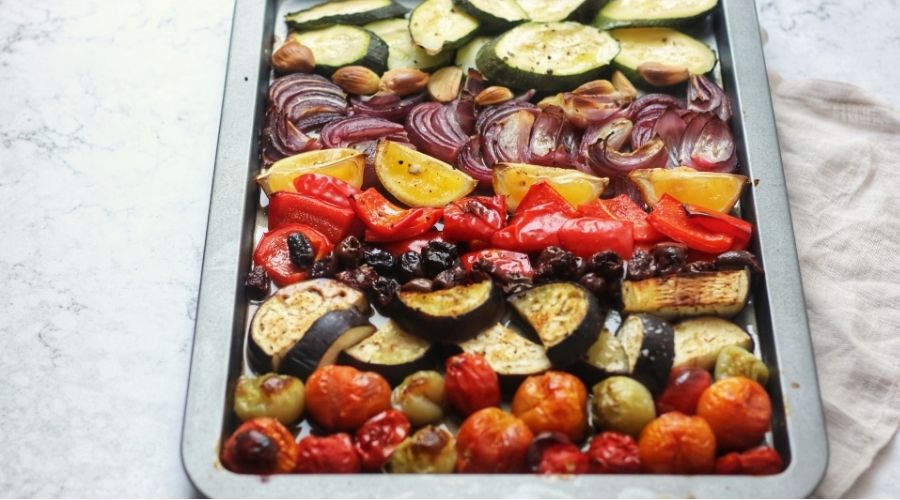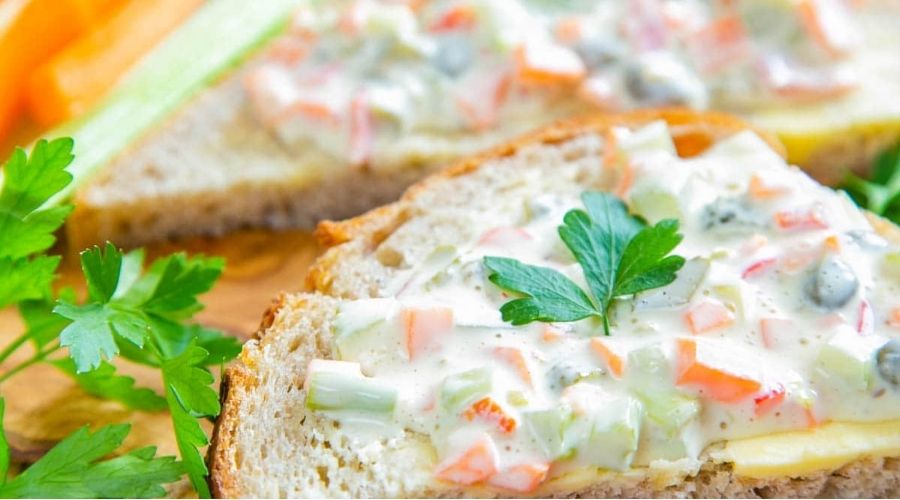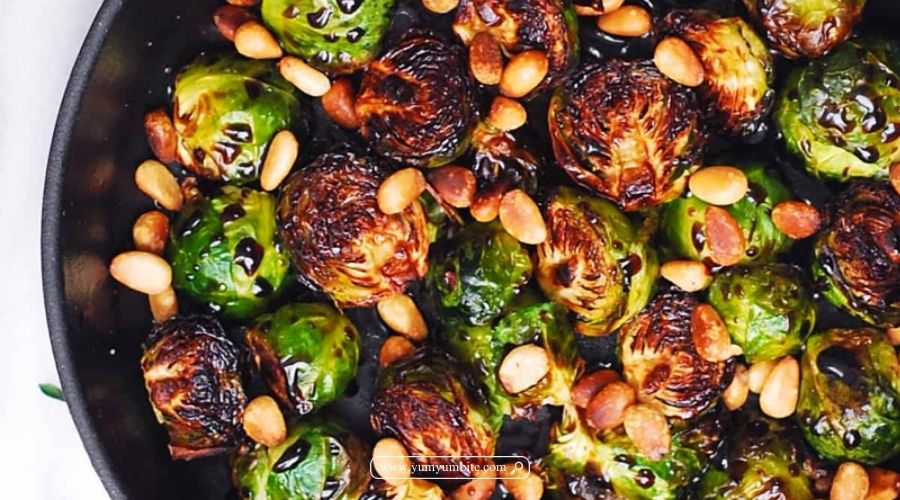Leftover balsamic glaze is a culinary gem that often gets overlooked after a big meal or special occasion.
This sweet and tangy condiment, with its rich flavor profile, can elevate a wide variety of dishes—from appetizers to desserts. Instead of letting it languish in the fridge, why not explore the creative ways to use leftover balsamic glaze?
In this article, we’ll dive into various innovative ideas that will help you make the most of this delicious ingredient.
Whether you’re looking to enhance your salads, marinate meats, or even drizzle it over desserts, you’ll discover that balsamic glaze is not just a condiment but a versatile companion in your kitchen.
What to Do with Leftover Balsamic Glaze: Creative Culinary Ideas
By thinking beyond traditional uses, you can incorporate this flavorful ingredient into a variety of dishes, enhancing both taste and presentation.
Whether drizzled on roasted vegetables, used as a marinade, or even paired with fruits for a unique dessert, the applications are endless.
This not only helps reduce food waste but also adds excitement to your cooking routine. The next time you find yourself with leftover balsamic glaze, remember these creative ideas and savor the rich flavors that this versatile condiment can bring to your meals.
With a little imagination, you can turn a simple leftover into a culinary masterpiece.
Drizzle on Roasted Vegetables

One of the simplest and most flavorful ways to use leftover balsamic glaze is to drizzle it over roasted vegetables.
The sweetness and tanginess of the glaze enhance the natural flavors of veggies like Brussels sprouts, carrots, or bell peppers, making them a delightful side dish.
This option is not only quick to prepare but also adds an elegant touch to your meal. Just be cautious not to add too much glaze, as its concentrated flavor can overpower the vegetables.
Consider tossing the veggies in a light coat of olive oil before roasting to balance the glaze’s sweetness.
Enhance Salads
Leftover balsamic glaze makes a fantastic addition to salads, acting as a flavorful dressing or finishing touch.
It pairs beautifully with mixed greens, goat cheese, and nuts, creating a refreshing and sophisticated dish. This option allows you to get creative with your salad combinations while adding depth to the flavors.
However, be cautious with portion size; a little goes a long way, so start with a small drizzle and adjust according to your taste.
You can also combine it with olive oil and herbs for a more balanced dressing.
Marinate Meats
Using balsamic glaze as a marinade for meats like chicken, pork, or steak can elevate your dishes significantly.
The glaze not only adds flavor but also helps tenderize the meat, resulting in juicy and delicious results.
This option is ideal for quick weeknight dinners or when you’re hosting a gathering. Just be
cautious about marinating time; while shorter marination works for chicken, red meats can benefit from longer marination (up to several hours).
To maximize flavor, consider adding garlic, herbs, or citrus juice to the marinade mix.
Drizzle on Desserts
Surprisingly, balsamic glaze can be a delightful addition to desserts, especially when paired with fruits.
Drizzling it over fresh strawberries, peaches, or vanilla ice cream creates a delicious contrast of flavors that is sure to impress.
This option is a creative way to use up leftover glaze and explore sweet applications.
Just be cautious with the amount; the glaze is sweet, and too much can overwhelm the dessert.
You can also experiment by incorporating it into fruit salads or using it to complement cheese platters with sweet elements.
Flavorful Pizza Topping

Balsamic glaze can take your pizza to the next level. After baking your pizza, drizzle the glaze over the top to add a rich, tangy sweetness that complements savory toppings like prosciutto, arugula, or goat cheese.
This option is perfect for creating gourmet-style pizzas at home.
Just be cautious not to add the glaze before baking, as the sugars can burn and create a bitter flavor.
Instead, wait until the pizza is out of the oven for the best results.
Pasta Dressing
Transform leftover balsamic glaze into a flavorful pasta dressing. Toss it with cooked pasta, fresh vegetables, and your choice of protein for a quick and delicious meal.
The glaze adds a depth of flavor that enhances the entire dish, making it feel special with minimal effort.
Just be cautious not to overdo it; the glaze is potent, so start with a small amount and add more as needed.
For added freshness, consider mixing in some herbs or a sprinkle of cheese.
Glaze for Grilled Fruits
Balsamic glaze works wonderfully with grilled fruits like peaches, pineapples, or figs.
The heat of the grill caramelizes the sugars in the fruits while the glaze adds a complementary sweetness and tang.
This option is an excellent way to create a unique dessert or side dish for summer barbecues.
Just be cautious about grilling time; fruits can cook quickly and become mushy if left on the heat too long.
Serve the grilled fruits with a scoop of ice cream or alongside a cheese platter for an impressive presentation.
Marinade for Roasted Nuts
Using balsamic glaze as a marinade for roasted nuts can create a delicious and addictive snack.
Toss your choice of nuts in a mixture of balsamic glaze, olive oil, and spices, then roast them in the oven until they’re crispy.
This option is great for elevating your snack game, perfect for parties or casual gatherings.
Just be cautious with the glaze quantity; too much can cause the nuts to become overly sticky.
Experiment with different nuts and spices to find your perfect flavor combination!
Savory Sandwich Spread

Balsamic glaze can add a delightful kick to sandwiches and wraps.
Use it as a spread on crusty bread or as a finishing drizzle on your favorite sandwiches, especially those with ingredients like mozzarella, fresh basil, or grilled vegetables.
This option elevates a simple sandwich into something gourmet. Just be cautious not to overdo it, as the glaze’s strong flavor can overwhelm other ingredients.
Pair it with complementary flavors like pesto or olive tapenade for a delicious combination.
Flavor Booster for Soups
Incorporating balsamic glaze into soups can enhance their depth and richness. A small drizzle added just before serving can bring out the flavors of tomato-based soups, lentil soups, or even butternut squash soup.
This option is a great way to elevate your favorite soups with minimal effort.
However, be cautious with the quantity; start with a teaspoon and adjust according to your taste to avoid overpowering the dish. You can also swirl it in as a garnish for visual appeal.
Dipping Sauce for Appetizers
Transform leftover balsamic glaze into a dipping sauce for appetizers. Mix it with olive oil or yogurt to create a creamy, tangy dip for breadsticks, fresh vegetables, or even mozzarella sticks.
This option is perfect for entertaining or enjoying a casual snack. Just be cautious about the consistency; if the glaze is too thick, you may need to thin it out with a little oil or water.
Feel free to experiment by adding herbs or spices for an extra flavor boost.
Finish for Risotto
Drizzling balsamic glaze over a creamy risotto can add a lovely contrast of flavor and color.
The richness of the risotto pairs beautifully with the glaze’s sweetness and acidity, making each bite a delightful experience.
This option is perfect for a fancy dinner or a cozy night in.
Just be cautious about when you add it; drizzle it just before serving to maintain its vibrant flavor.
You can also incorporate fresh herbs like basil or parsley for a pop of freshness.
How to Store/Freeze Leftover Balsamic Glaze
Properly storing leftover balsamic glaze is essential for maintaining its rich flavor and texture.
When stored correctly, homemade or store-bought balsamic glaze can last for several months, allowing you to enjoy its versatility in various dishes without compromising quality.
Understanding the best practices for storage and freezing ensures that you minimize waste while making the most of this delicious ingredient.
Whether you’re keeping it in the fridge for short-term use or freezing it for later, following these guidelines will help you keep your balsamic glaze fresh and ready for your next culinary adventure.
Step-by-Step Guide
- Cool Down (If Homemade): If you’ve made your own balsamic glaze, allow it to cool completely before storing. This prevents condensation, which can lead to spoilage.
- Choose Your Container: For short-term storage (up to a month), use an airtight glass or plastic container. If you want to store it longer, consider using freezer-safe bags or containers to prevent freezer burn.
- Label the Container: Write the date on the container or bag. This helps you keep track of how long the glaze has been stored, ensuring you use it within a safe timeframe.
- Refrigerate: Store the container in the refrigerator if you plan to use the glaze within a month. The cold environment will help maintain its flavor and consistency.
- Freeze for Long-Term Storage: If you want to keep the glaze for an extended period (up to six months), transfer it to a freezer-safe container or bag. Remove as much air as possible to minimize the risk of freezer burn.
- Thawing and Reheating: When you’re ready to use frozen balsamic glaze, transfer it to the refrigerator to thaw overnight. If you need it quickly, you can thaw it in a warm water bath. Reheat gently on the stove or microwave if it has thickened after freezing.
Storing and freezing leftover balsamic glaze is a straightforward process that allows you to enjoy its delicious flavor long after its initial use.
By following the steps for proper cooling, container selection, and labeling, you can ensure your glaze stays fresh and flavorful, whether stored in the refrigerator for short-term use or in the freezer for longer preservation.
This thoughtful approach not only minimizes waste but also enhances your cooking experience, as you’ll always have this versatile ingredient on hand.
The next time you find yourself with extra balsamic glaze, remember these storage tips to keep it ready for your culinary creations, ensuring that its sweet and tangy flavor continues to elevate your dishes.
Enjoy the convenience and deliciousness of having balsamic glaze readily available for your next cooking endeavor!
1. Can I use leftover balsamic glaze on desserts?
Absolutely! Leftover balsamic glaze can add a unique sweetness and tang to desserts.
Drizzle it over fresh fruits, ice cream, or even cheese platters to enhance the flavors. Just be cautious with the amount; a little goes a long way.
2. How long can I store leftover balsamic glaze?
If stored properly in an airtight container in the refrigerator, leftover balsamic glaze can last for up to a month.
If you freeze it, it can be preserved for up to six months. Always label the container with the date for reference.
3. Can I use balsamic glaze in marinades?
Yes, balsamic glaze is a fantastic ingredient for marinades. Its sweetness and acidity help tenderize meat and add flavor.
Just be cautious not to marinate for too long, as the acidity can break down the meat too much.
4. What are some savory dishes I can use balsamic glaze in?
Balsamic glaze works well in various savory dishes, including salads, roasted vegetables, grilled meats, and pizzas.
It adds a flavorful kick that enhances the overall dish. Just remember to use it sparingly at first to avoid overpowering the other flavors.
5. Can I make my own balsamic glaze at home?
Yes, making your own balsamic glaze is simple! Just simmer balsamic vinegar over low heat until it reduces and thickens to your desired consistency.
You can add a bit of sugar or honey for sweetness if you like. Just be cautious while reducing it, as it can burn if left unattended.
Sources
- https://www.yummly.com/recipes/cooking-with-balsamic-glaze
- https://www.budgetbytes.com/homemade-balsamic-glaze/
- https://www.tasteofhome.com/collection/balsamic-recipes/
- https://www.reddit.com/r/EatCheapAndHealthy/comments/gjmr5c/ways_to_use_balsamic_glaze/
- https://www.delallo.com/blog/balsamic-vinegar-recipes?srsltid=AfmBOopTrqJ8a1Yl1QeRDy1kmcLdeYmr4O6uuqSjf5JHbQI-4CgYqErY


